Are you looking for a way to transform your yard into a magnificent outdoor living space? Well, stunning Landscaping Timber Ideas may be the answer! With these clever landscaping ideas, you can create amazing views or structures and increase the value of your property. All it takes is just a little bit of creativity and knowledge about Landscaping Timber Ideas and you can make your yard look like an oasis!
Ways to use landscaping timbers in your yard
Landscaping timbers can be used in a variety of ways to create aesthetic and functional garden features. Here are some creative and practical ideas for how you can use landscaping timber in your yard:
- Create an attractive edge to lawns, flower beds, pathways, and driveways with landscape timbers. This will make an eye-catching contrast to other flat surfaces in the yard.
- Build a raised flower bed or vegetable garden using landscape timbers. This is a great way to create a focal point in your garden and define different areas. You can also use the height of the timber to add character, texture, and drama to the space.
- Use landscaping timber to build built-in seating around outdoor firepits or along pathways as benches for guests. Not only will it look good but it will be very practical too!
- Construct an outdoor playhouse for kids with landscape timbers, such as a tree house or clubhouse. This is sure to become their favorite hangout spot!
- Create attractive flower boxes to add color and texture to a wall or fence.
- Use landscaping timber to construct an arbor over a patio or garden walkway. This will provide a lovely focal point for your outdoor area as well as provide shade in the summer months.

With so many possibilities, it’s easy to see why landscaping timbers are such a popular choice for homeowners looking to create beautiful, practical spaces around their homes.
Give garden beds an edge
Garden beds are a great way to add structure and color to your outdoor space. To take it up a notch, why not try adding an edge?
Using timber for the edge of your garden bed will give it that added touch of class and definition. The main thing you’ll want to consider is the size of the timber – select something wide enough that it won’t be lost among your plants, but narrow enough that its presence doesn’t dominate.
For basic landscaping ideas, use treated pine sleepers or logs as an effective way to define edges around raised garden beds.
Once you’ve selected the perfect timber for your space, it’s important to know how best to lay it down. We recommend digging a shallow groove around the perimeter of your garden bed and laying your timber in it – this will help keep it secured in place over time. It’s also important to choose a suitable fixative or adhesive so that everything holds together as one solid unit.
With a little bit of time and effort, adding an edge to your garden beds can really give them that extra pop. Plus, using landscaping timber means you’re using an eco-friendly material which is both safe and long-lasting.
Build an outdoor stairway
Adding an outdoor stairway to your landscape is a great way to add a touch of elegance and convenience. You can create a beautiful curved stairway using landscaping timbers, or you can build a more rustic staircase with straight stairs. Either way, the result will be stunning!
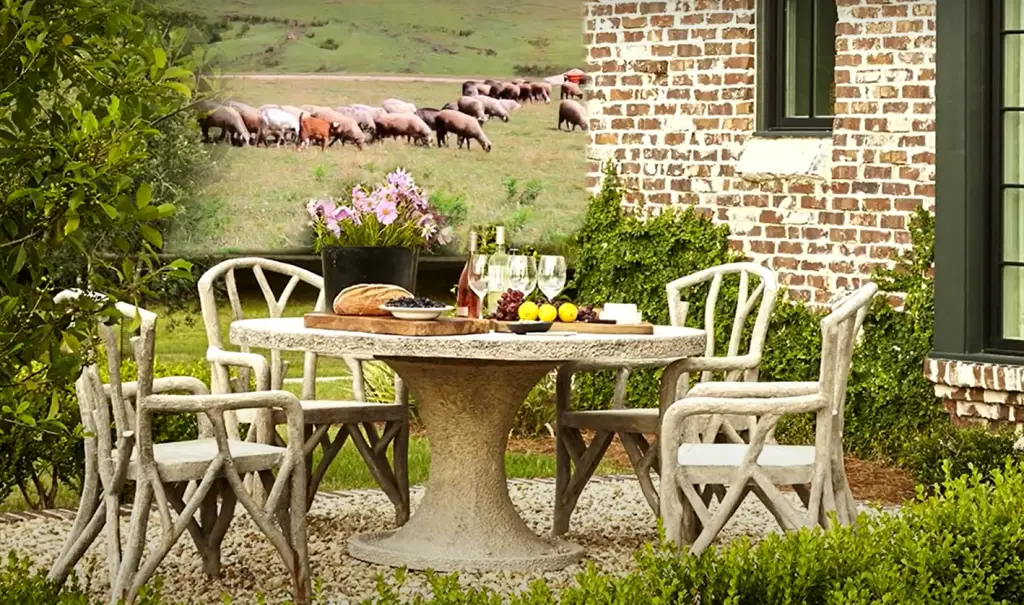
When installing stairs, you should first ensure that they are placed on level ground. Once this is done, it’s time to start building! Start by constructing the frame for the stairs using 4×4 timber posts. Next, nail 2×6 boards between each post for the stringers. Measure and cut the treads from 2×6 lumber and make sure to check measurements before cutting – staircases should have consistent rises and runs to ensure they are safe to use. Finally, complete the stairway by adding landscaping timbers along each side of the stairs. This will give the staircase a unique look and also provide stability.
Now that your outdoor staircase is complete, you’ll have access to a higher level of your landscape – perfect for gardeners or just enjoying views from a new vantage point! With landscaping timber, you can create an eye-catching staircase that will be both functional and beautiful. So grab your tools and get started!
Erect the perfect fence
A timber fence is often the first item of landscaping that you should think about when planning your garden. It will not only form a boundary to keep out unwanted guests, but it can also add privacy and security from prying eyes. Not to mention, it can look great too!
Fences come in all shapes and sizes and there are many styles to choose from; however, make sure that your chosen style complements the architecture of both your home and surrounding buildings. When you’ve chosen the right fencing for you, start by setting out stakes with string for a smooth line. Then take measurements between posts so that you know how much timber you need for each one.
When erecting your fence, it’s important to ensure the posts are set deep enough so they won’t be easily moved. If you’re using timber posts, make sure that you treat them with a weatherproofing agent first to help stop rot and decay. Once your fence is up, secure the rails in place with an appropriate fixative. Finally, add a finishing touch by painting or staining the wood as desired.
Take time to enjoy your handiwork – you’ve just created a beautiful feature for your garden that will last for years!
Create an outdoor deck retreat
If you’re looking for a way to create an upscale, modern oasis in your own backyard, consider building a deck using landscaping timber. Whether it’s an expansive terrace overlooking a pool or garden, or just enough room for some chairs and a BBQ grill, the possibilities are endless. With the right design and materials, your outdoor retreat can become the envy of the neighborhood.

When selecting timber for this project, make sure that it is treated with preservatives that protect against moisture and rot. A raised platform built with pressure-treated pine or cedar will last longer than non-treated wood while providing superior strength and durability. Also, there are many options available when it comes to finishes. From natural wood stains to colorful paint treatments, you can find the perfect look for your decking project.
Once the timber has been installed, you can then go ahead and add any desired accessories and furniture. Think about incorporating a bar or entertaining area into the space so that you can make the most of those summer nights spent with friends. Or, consider adding a hot tub or sauna to really turn up the luxury factor!
Design a treehouse or fort
Treehouses and forts are popular landscaping timber ideas that can add a fun element to your garden. They’re great when you have kids or grandkids visiting, as they provide hours of entertainment. You can find ready-made designs online, but why not use your imagination and design something unique?
Using timber to create an outdoor play area is a great way to use up leftover pieces from other projects. Measure the space before you start building so you know how much timber is needed. This will also help keep costs down, as you won’t buy more than necessary.
Galvanized screws and bolts should be used instead of nails to ensure stability when it comes time for climbing around! Make sure the treehouse or fort is sturdy and has railings if necessary. Add some extra touches by painting it with bright colors or adding fun decorations.
Throw a pergola into the mix
Adding a pergola to your landscaping is a great way to add some visual interest and provide yourself with shade. Pergolas are generally constructed using timber posts, beams, and rafters. You can choose the type of wood you use for these elements depending on the look you’re going for – cedar, teak, or pine all make good choices. To ensure your pergola lasts longer, don’t forget to treat it with a sealant before installing it!
A good tip when building a pergola is to use galvanized steel post bases and brackets that can be securely attached to concrete footings. This will give it extra stability and prevent future warping or cracking due to weather changes. After you’ve got your pergola all set up, you can hang plants and outdoor furniture from it to complete the look.
By introducing a pergola into your landscaping design, you can create a shady refuge and an eye-catching focal point that will make your garden look beautiful for years to come!
Start a vertical garden
Vertical gardens can help to create a striking feature in your outdoor space. By building a series of planter boxes, you can construct a vertical garden that will bring a pop of color and texture to your yard.
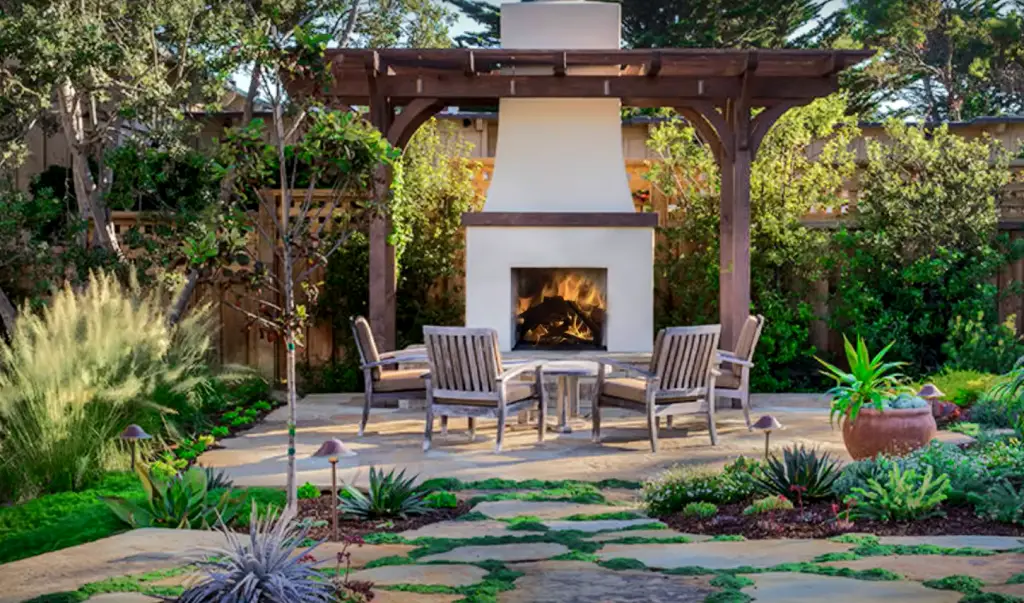
You can use timber to build the planters, which is an excellent material choice as it is weather-resistant and easy to work with. Be sure to research the best type of wood for your climate before starting this project. Once completed, you can fill each box with soil and plant colorful flowers or foliage to add interest to your garden.
Construct a shed
A shed is an excellent way of adding additional storage to your home, but if you want a stylish option that also adds to the look of your outdoor area, why not consider building one from landscaping timbers? You can choose from a range of colors and textures for the timber to create an eye-catching structure that stands out in your garden. The solid construction also ensures it will last for years to come. To build a sturdy shed with landscaping timber, you’ll need a few basic tools and materials such as deck screws and lumber sealer or stain. Start by constructing the base frame and then assemble the walls and roof on top. If you’re feeling adventurous, add some decorative touches such as window boxes or flowerbeds around the outside of your shed. Finally, finish off with a coat of sealer or stain to protect the timber and give it a polished look. With a bit of effort, you can create an attractive storage area that will make all your neighbors green with envy!
Build a bridge over water features
Adding a bridge to your landscape is one of the most aesthetically pleasing landscaping timber ideas. A bridge over water features such as a stream, pond or fountain can make an attractive addition to any outdoor space. Bridges can also serve practical functions by providing a safe way to cross from one side of the water feature to another. When building a bridge, it’s important to use strong and durable materials like pressure-treated timber for best results. It’s also important to ensure that you place the bridge at the correct height so that it does not obstruct the view of your water feature when viewed from different angles. By installing appropriate safety rails along its length, you can create an even more secure crossing point for visitors and family members alike. [1]
Celebrate the rich tones of timber
Adding timber to your garden can be a great way to bring a touch of warmth and sophistication. The natural tones of this material will harmonize with the colors already in your space while creating an inviting atmosphere that everyone will enjoy.
Zone your space with timber screens
If you want to create different areas in your outdoor space, try using timber screens or trellises. This is a great way to separate the entertaining area or alfresco from a more private sitting area. It can also be used as an effective windbreak if one side of your garden is prone to strong winds. The beauty of timber screens and trellises is that they can be easily shaped into patterns like waves or even circles for something that is truly unique. Plant some climbers near them for added interest. You could also use pieces of timber in the same tone but of varying lengths and thicknesses to add texture and depth to your landscape design.
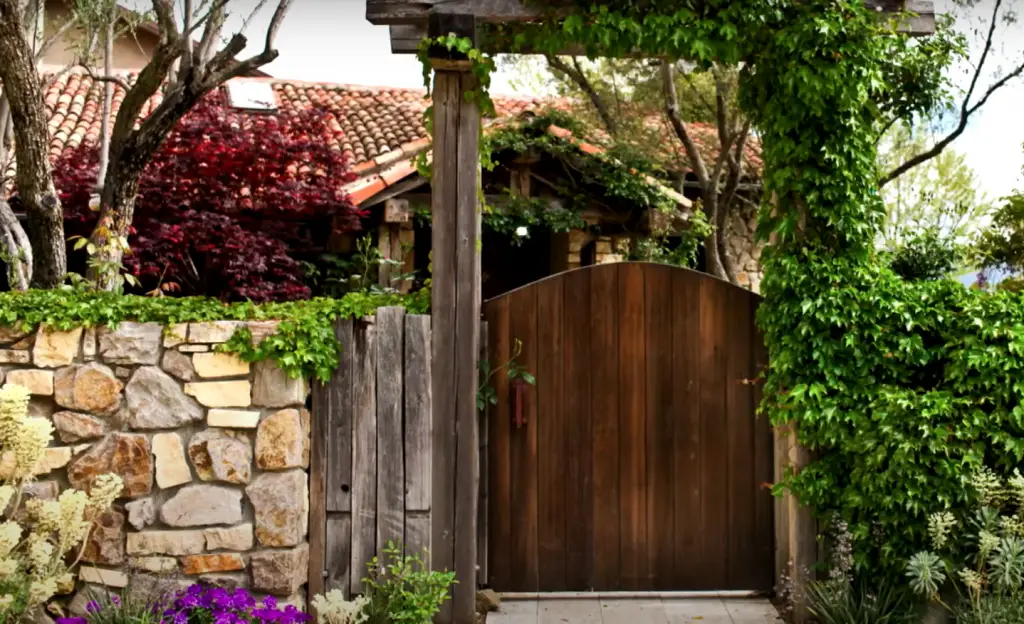
Another option would be to build raised beds with timbers, which is a great solution if you want to cultivate vegetables, herbs or flowers in your garden. You can fill the beds with soil and add compost for fertility. This works especially well in small gardens where space is at a premium. As an added bonus, you’ll be able to easily monitor the growing conditions of your plants without having to bend down all the way to ground level.
And don’t forget about using timber planters, which are perfect for adding greenery around decking areas or poolside. They’re also very handy for creating focal points in larger spaces; they provide structure and depth that will make them stand out from surrounding elements. With so many options available when it comes to landscaping timber ideas, there’s no limit to your creative potential.
Weave timber walkways through the planting
A popular way to use timber in landscaping is to create paths. It can add a charming accent and make your outdoor space more interesting, as well as make it easier to navigate. Weaving timber walkways through the planting is an especially nice touch – it helps show off the planting design and gives visitors something extra to explore. If you’re feeling creative, you could even create different patterns with wood planks or logs!
Unify zones with timber landscaping
Landscaping timber gives you a great opportunity to unify zones within your garden. A simple, yet effective way of achieving this is by repeating the same type of timber in different areas of your garden. This creates a sense of continuity and can help connect unrelated sections together. For example, if one side of your garden has some raised beds made out of railway sleepers, consider repeating that look with some railway sleeper stairs on the other side. Or if one area’s walling has been built with natural stone logs, use the same kind of logs for edging and borders elsewhere. The key is to not overdo it – just enough repetition will be enough to create a unified feel throughout your space.
Build a wildlife-friendly log stack
Adding a log stack to your garden is an easy and effective way to create a wildlife-friendly habitat. You can use either flat timber or logs of varying lengths for the stack, depending on the look you’re trying to achieve. You should place your log stack in a sheltered spot such as near fencing or hedging so choose timbers that will be resistant to whatever weather conditions they may face. Once built, you can sit back and watch as different species of wildlife make it their home! [2]
Landscape Timbers: Other Things to Know
Landscaping timber can be used for a wide variety of purposes. However, there are some other things you should remember when using landscaping timber.
First of all, landscaping timber is not always the best choice for every project. While it is strong and durable, it may not be suitable for certain types of projects or in certain areas that receive heavy foot traffic or weathering from sun and rain.
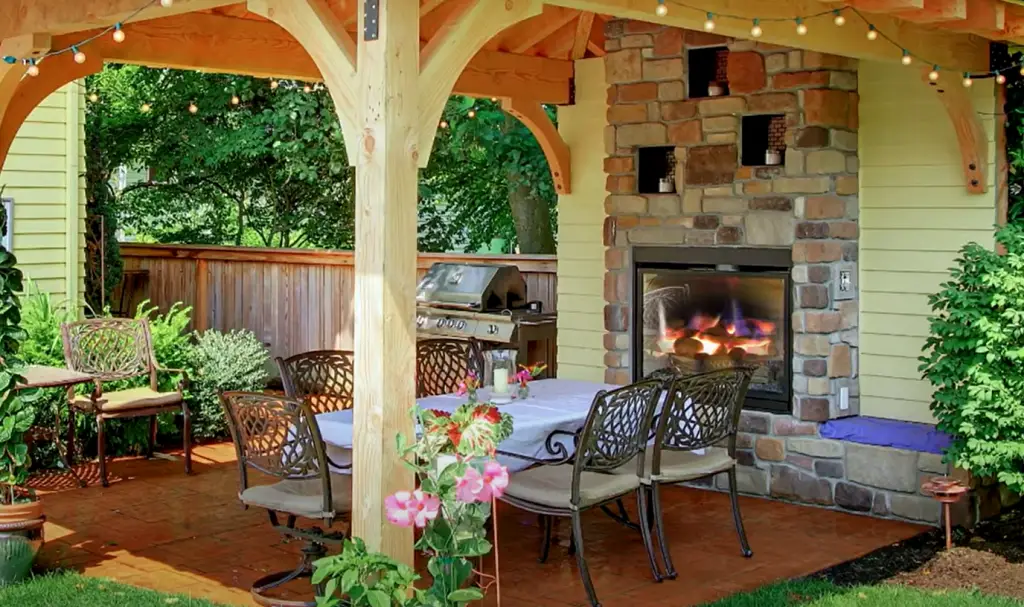
Second, when installing landscape timbers, you need to pay attention to any local building codes or regulations in your area that might affect their use. Additionally, you should ensure that the materials you use are safe and meet any specific requirements related to fire safety or other factors.
Finally, if you are using landscape timbers in an area that receives a lot of water, make sure you take steps to seal the material and keep it from rotting or becoming damaged due to moisture. Additionally, if you are installing timber near walkways or other areas with heavy foot traffic, make sure to properly secure the materials with stakes, screws, brackets, etc., as needed.
Types of landscaping timbers
When it comes to landscaping, timber is one of the most popular materials used. It’s versatile and strong enough to hold up against weathering and wear and tear, making it an ideal choice for outdoor projects. Here are some of the most common types of landscaping timbers available:
- Pressure Treated Pine: This type of wood has been treated with chemicals to make it resistant to rot and insect damage. The wood can be stained or painted to the desired color—a great option if you’re looking for something that will last a long time in harsh weather conditions.
- Redwood: Redwood is a naturally beautiful material that has been used in landscaping for centuries. Redwood is very durable, and it’s often used for decks and fences. It has a unique grain pattern that adds character to any outdoor space.
- Cedar: Cedar is a softwood that’s naturally resistant to rot and insects. It can be stained or left natural to bring out its lovely color. Cedar doesn’t require as much maintenance as pressure treated pine, but it will need some occasional upkeep every now and then.
- Bamboo: If you’re looking for something unusual, bamboo may be the perfect choice. This type of timber is strong and lightweight—it won’t warp or splinter like other woods do over time. Plus, bamboo has a warm look that fits into any landscape design.
No matter which type of timber you choose, make sure it’s the right fit for your project and that it’s been appropriately treated to withstand the climate of your area.
Pre-treated natural wood
Natural wood is a popular choice for landscaping timber ideas, particularly for outdoor living areas and decks. Pre-treated natural wood is resistant to rot, moisture, insects, and fungal decay. It can also be stained or painted to match your home’s exterior color scheme. You can find pre-treated decking boards in different shapes and sizes to help you create the desired look for your garden. It’s important to remember that natural wood requires regular maintenance such as staining, painting, and sealing in order to maintain its longevity.
Untreated natural wood
If you want to make sure that your landscape timber project stays looking as natural and organic as possible, then untreated natural wood is likely the best choice for you. This kind of material will weather naturally over time, but it can also be treated with a sealant in order to ward off water damage and other issues. It’s easy to cut and shape, so you can use it for myriad projects around your yard. Plus, since untreated wood is typically cheaper than treated materials, it can be much more cost effective if you’re on a budget. Be aware however that this type of wood won’t last nearly as long as treated materials, so if durability is more important to you than aesthetics or cost considerations, then treated wood may be the better choice.
Synthetic
Synthetic landscaping timber is becoming increasingly popular due to its low maintenance and durability. Synthetic timber is made from plastic-based materials, such as polyethylene or polypropylene, and can be molded into a variety of shapes and sizes. These synthetic timbers are resistant to rot, insect damage, splintering and weathering making them ideal for outdoor use. Furthermore, they require minimal cleaning or repair which makes them perfect for busy homeowners who don’t have time to maintain their landscape. Plus, because there are no knots or grains in the material they won’t warp over time like real wood does.
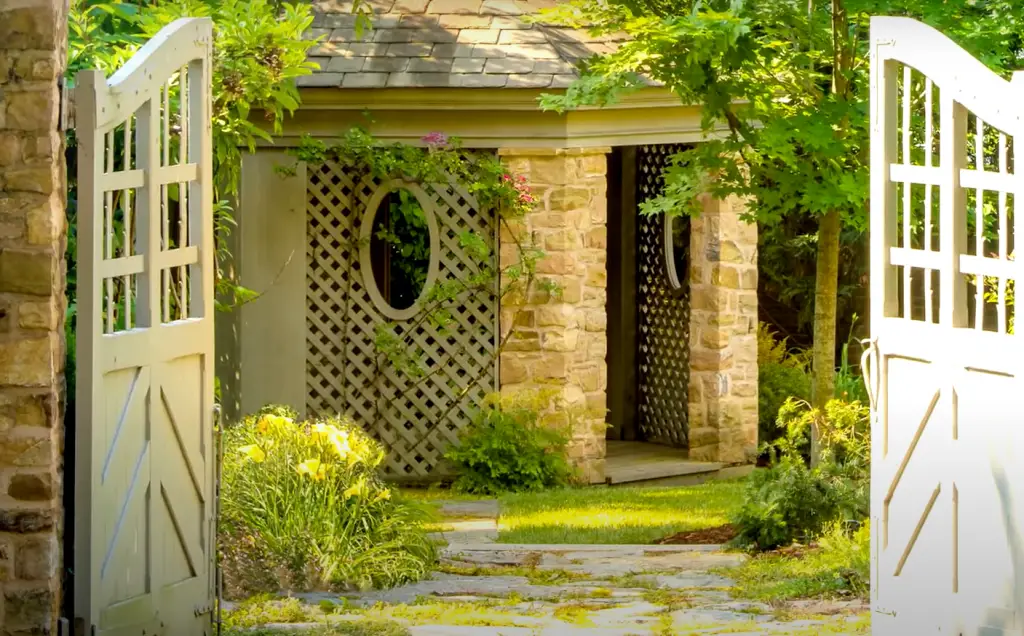
When shopping for synthetic landscape timber it’s important to take into consideration the color selection, size and texture.
Most come in shades of grey that mimic the look of natural wood but you can also find a variety of other colours to choose from.The size is important as it will determine how many pieces you need to complete the project. Also consider the thickness of the material you’re using for each piece since thicker timbers are more durable and resilient. Finally, factor in any additional elements such as finish or treatment which may be necessary depending on where you plan to use them.
Synthetic landscaping timber offers an attractive and low-maintenance alternative to real wood products and can be used for a wide variety of projects. With the right research and preparation, you can create a landscape that looks good and lasts for many years to come.
FAQ
What are the best timbers for landscaping?
The types of timber that you use in your landscaping project will depend on the look and feel that you’re going for. Generally, species like Red Cedar, Teak, Mahogany, Oak, or Pine are good choices. However, each type of wood has its own properties and benefits so it’s important to research what might work best for your particular project. [3]
What can I make with landscape timbers?
Landscape timbers are an incredibly versatile material and can be used to make a range of different projects. Here are just some of the ideas you could use landscape timbers for:
- Raised gardens: Landscape timbers are perfect for creating raised garden beds, as they’re strong enough to hold up your soil and plants while allowing excess water to drain away quickly.
- Retaining walls: You can use landscape timbers as retaining walls or to create terraced gardens with steps. This is particularly useful if you have sloping land that needs leveling out.
- Steps: You can also use landscape timber planks to create steps – either inside your house or outside in a garden or yard.
- Outdoor furniture: You can use landscape timbers to make benches, tables or decks for your outdoor space.
- Walkways and pathways: You can create a path through your garden with landscape timbers – this is a great way to join different areas of your garden together without having to step on the soil directly.
- Home decor: Landscape timber planks can also be used as wall art, frames or shelves – adding rustic charm to any room of the house! The possibilities really are endless when it comes to landscaping timber ideas. [4]
So get creative and you’ll soon realize just how versatile these materials are!
What kind of wood is used for landscape?
When it comes to landscaping timber, there are many different types of wood that can be used depending on the look and feel you’re trying to achieve. Popular options include cedar, redwood, pressure-treated pine, teak and hardwoods like mahogany or oak. Cedar is a popular option because of its natural resistance to rot and decay as well as its rich coloring. Redwood is another great pick for landscape projects because of its long lifespan and beautiful grain pattern. Pressure-treated pine is also an economical choice that can work nicely in various outdoor settings. Teak is another excellent choice due to its strength and durability, plus it also stands up better against wet weather conditions than other woods. Finally, if you’re looking for a more traditional look, hardwoods like mahogany or oak can offer the perfect touch. [5]

No matter which type of wood you choose, it’s important to take into account the climate conditions in your area before making a purchase. Certain types of wood may be better suited for cold climates while others may be better for warm climates. Additionally, when choosing wood for your landscaping project, make sure that it’s been pressure-treated to resist rot and decay caused by moisture and insects. In addition to these tips, there are many other factors to consider such as size, color and texture when selecting landscape timber. By considering all these elements before starting your project, you can ensure that the finished product will have a beautiful, long-lasting look.
What is landscape timber?
Landscape timber is a construction material made from wood that can be used to create retaining walls, flowerbeds and other landscaping structures. It is often treated with chemicals to prevent rot and insect damage, which helps it last longer in outdoor conditions. When installing landscape timber materials, it’s important to consider the overall size of your project and what type of timber you’ll need for the specific job.
Useful Video: Landscape Timber Stairs Ideas for Your Slope
Conclusion
Landscaping timber ideas can be a great way to add a unique touch to your outdoor living space. With the right planning and materials, you can create a beautiful landscape that will last for years to come. Remember to think about how you want the finished product to look, as well as how much maintenance it may require in the future. Consider consulting with an expert if you are feeling overwhelmed or stuck on where to start. Most importantly, have fun and enjoy the process of bringing your landscaping timber ideas into reality! Good luck!
References:
- https://www.lawnstarter.com/blog/landscaping/landscape-timber-ideas/
- https://www.gardeningetc.com/design/landscaping-with-timbers
- https://www.thespruce.com/easily-install-a-landscape-timber-edging-2132416
- https://foter.com/15-unique-landscaping-timber-projects-ideas-youll-love
- https://hgic.clemson.edu/factsheet/treated-wood-in-the-landscape/





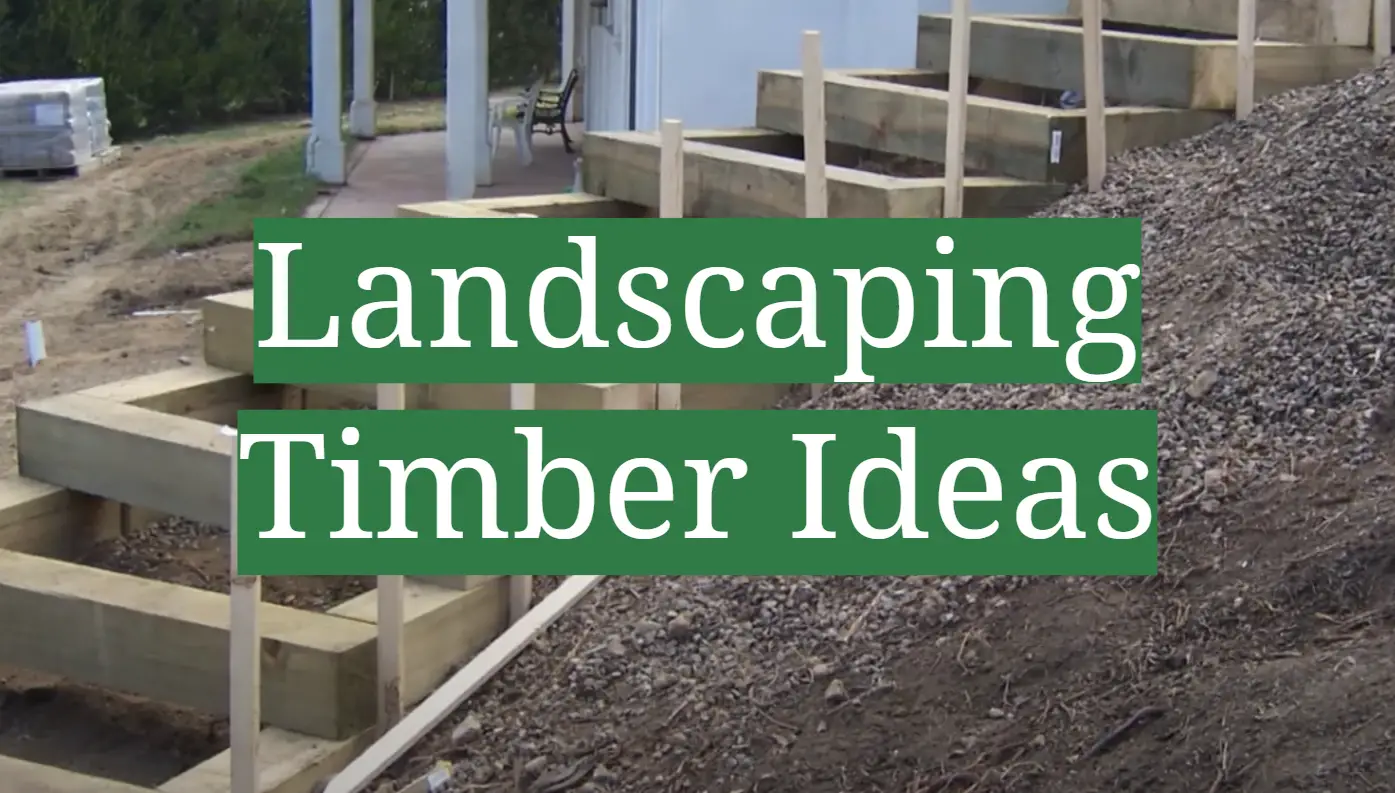




Leave a Reply
View Comments